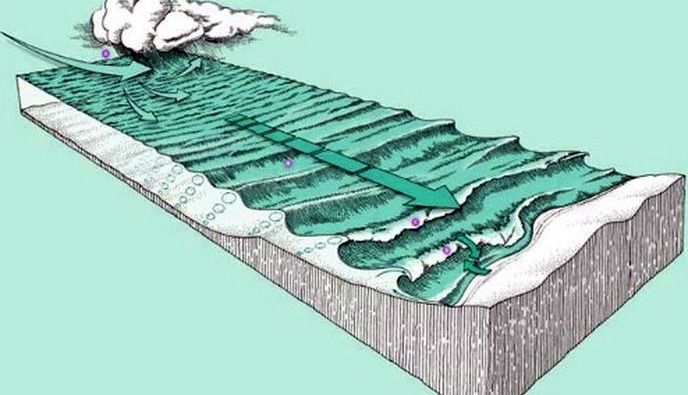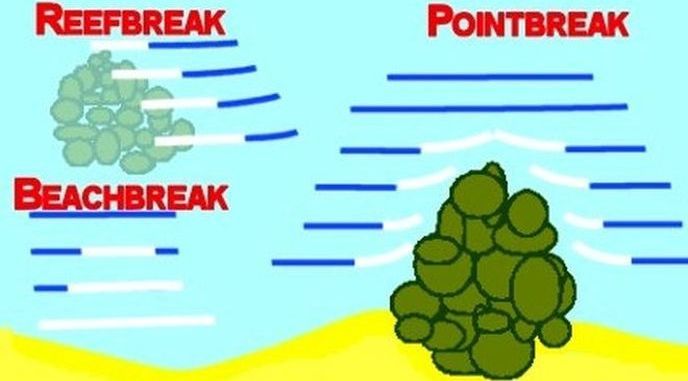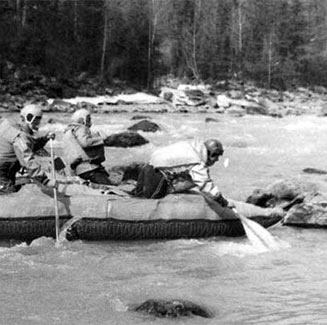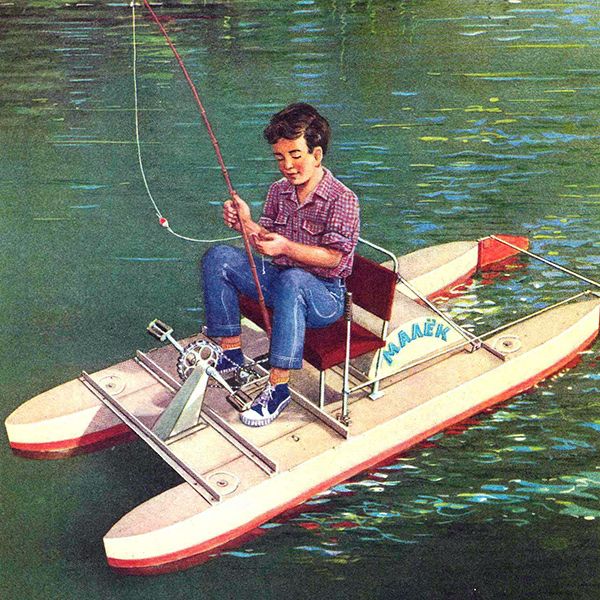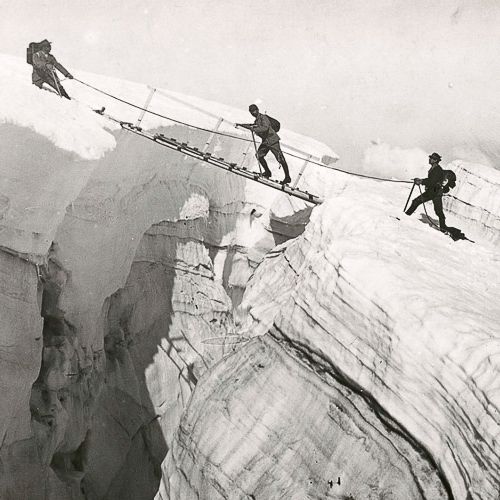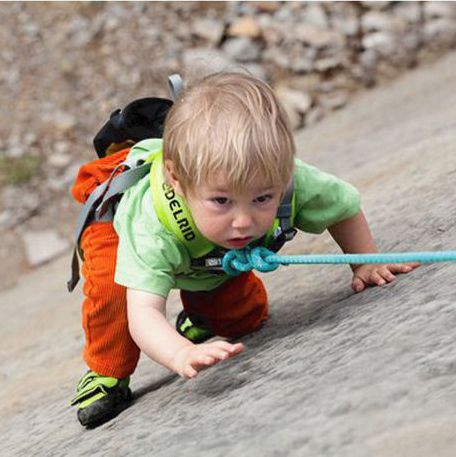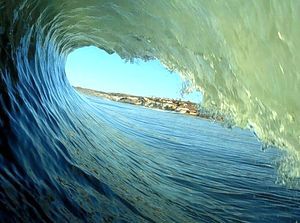 Wave Anatomy
Waves, their beauty, ceaseless motion, and variability never cease to amaze humans.
Wave Anatomy
Waves, their beauty, ceaseless motion, and variability never cease to amaze humans.
It is important to understand that changes in the ocean occur every second, waves are endlessly diverse and unique.
Successful surfing is impossible without understanding how waves form and propagate, as well as what determines their speed, power, shape, and height.
Let’s start by exploring the terminology.
Anatomy of a Wave
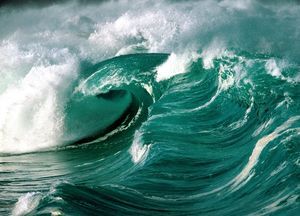 Wave Formation
A periodic oscillation of water relative to its equilibrium position is called a wave.
Wave Formation
A periodic oscillation of water relative to its equilibrium position is called a wave.
A wave has the following elements:
- Base – the bottom surface;
- Crest (lip, from the English “lip”);
- Front – the crest’s outline;
- Tube (tube/barrel) – the section where the crest closes down to the base;
- Wall – the sloping part on which the surfer rides;
- Shoulder – the section where the wall becomes less steep;
- Peak – the wave’s breaking point;
- Impact zone – the area where the lip crashes.
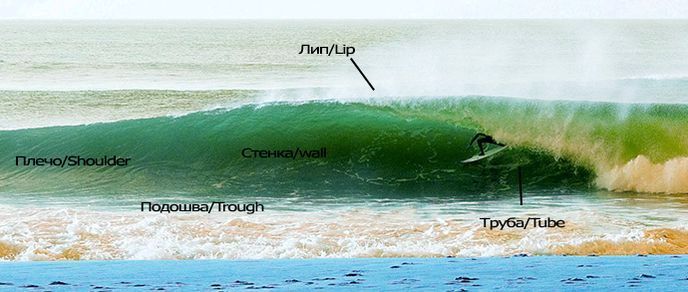 What a Wave Consists Of
Because waves are highly variable, measuring them is extremely challenging. Oscillations are characterized by several parameters.
What a Wave Consists Of
Because waves are highly variable, measuring them is extremely challenging. Oscillations are characterized by several parameters.
Height – the distance from the base to the crest. It is measured in different ways. Surf reports typically specify the oscillation range observed by meteorological buoys. Sometimes, the wave height is expressed in “body heights.”
Since athletes typically ride waves while crouched, one “body height” is approximately 1.5 meters.
Length – the distance between adjacent crests.
Steepness – the ratio of the wave’s height to its length.
Period – the time interval between two waves in a set (group).
Causes and Features of Wave Formation
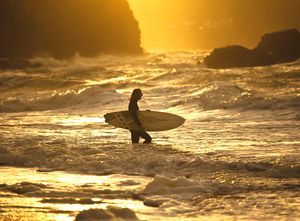 What Types of Waves Occur in the Ocean
Contrary to naive assumptions, marine or oceanic waves are not formed by coastal winds. The most widespread waves originate far out in the ocean.
What Types of Waves Occur in the Ocean
Contrary to naive assumptions, marine or oceanic waves are not formed by coastal winds. The most widespread waves originate far out in the ocean.
Persistent winds blowing in one direction agitate massive volumes of water, sometimes reaching the size of a multi-story building. Strong winds usually form in regions of extremely low pressure, characteristic of anticyclones.
In moderate winds, steep short waves known as “whitecaps” appear on the ocean’s surface.
In their initial stages of development, two-dimensional waves—with a height that does not exceed their length—travel in parallel rows of elongated crests. As the wind strengthens, the crests dissipate, and the wave length increases more quickly.
Once the wave’s speed matches the wind speed, the growth of the crests stops. From this point onward, the wave’s speed, length, and period increase, while its height and steepness decrease. These longer waves are better suited for surfing .
During intensifying storms, newer waves superimpose on older ones, making ocean turbulence appear chaotic. As the turbulence reaches its peak, the waves become extraordinarily long with extended crests. At this point, the length of the crests can stretch up to hundreds of meters (the record being up to 1 km).
Waves in which the crest height significantly exceeds the wave length are known as three-dimensional waves. Most commonly, these three-dimensional waves alternate between “hills,” “bumps,” and “troughs.” Waves arrive in sets (groups) of 2–10, typically in groups of 3. Usually, the middle wave in the set is the tallest and most well-formed.
What kind of waves can be found in Peniche →
What the Wind Moves
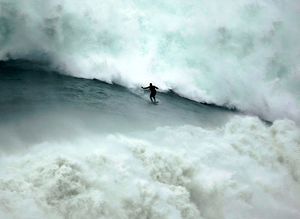 Surfing Waves
Every new wave causes water masses to rise and then fall.
Surfing Waves
Every new wave causes water masses to rise and then fall.
Fun fact: water particles do not move horizontally but rather in an irregular circular or elliptical motion, perpendicular to the wave front.
In fact, the trajectory of water particles resembles loops: intense rotation of the “water wheel” combines with slight forward movement in the wind’s direction.
This forms the wave’s profile: the upwind slope is gradual, whereas the downwind slope is steep.
This is why wave crests topple over, forming foam.
During wind action, it’s not the mass of water that moves but the wave profile. Thus, a surfboard lost by a surfer will bob forward and back, up and down, slowly drifting toward the shore.
What Determines Wave Parameters
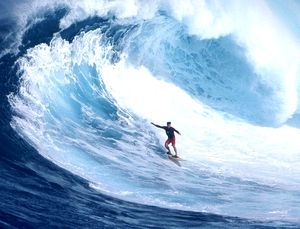 Giant Waves in the Ocean
Wave characteristics depend on wind speed, its persistence, changes in direction, the water body’s depth, and the fetch length (distance over which the wind blows without interruption).
Giant Waves in the Ocean
Wave characteristics depend on wind speed, its persistence, changes in direction, the water body’s depth, and the fetch length (distance over which the wind blows without interruption).
Fetch is determined by the dimensions of the water body.
The Impact of Wind Must Be Sufficient to Cover the Entire Space
That’s why stable waves for surfing are usually found on ocean coastlines.
When wind speed or direction changes by more than 45 degrees, older oscillations slow down, and a new wave system begins to form.
Swells
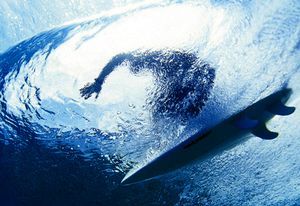 Photo of an ocean wave
Once they reach their maximum size, waves embark on a journey toward the shores. They align: smaller waves are absorbed by larger ones, and slower waves merge with faster ones.
Photo of an ocean wave
Once they reach their maximum size, waves embark on a journey toward the shores. They align: smaller waves are absorbed by larger ones, and slower waves merge with faster ones.
A group of waves of the same size and power, born from a storm, is called a swell. The journey of a swell to the shore can stretch for thousands of kilometers.
There are two main types of swells: wind swell and ground swell.
- The first isn’t suitable for surfing: the waves don’t travel a long distance and break in deep waters.
- The second, however, is ideal. Its long, fast waves can travel great distances and break steeply when they reach the coast.
Swells vary in amplitude and period. The longer the period, the better and smoother the waves.
In Bali, waves with a period shorter than 11 seconds are referred to as wind swell. A period of 16 seconds produces great waves, and an 18-second period is a rare treat, attracting professional surfers eager to catch them.
Every surf spot has an optimal swell direction that generates high-quality waves.
Wave Breaking
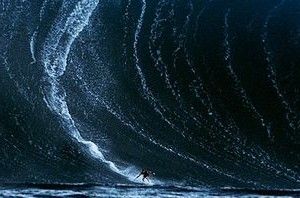 Types of ocean waves
As waves move toward the shore, they encounter shoals, reefs, and islands, gradually losing their initial power.
Types of ocean waves
As waves move toward the shore, they encounter shoals, reefs, and islands, gradually losing their initial power.
The farther the distance from the storm’s center, the weaker they become.
When waves meet shallow waters, there’s nowhere for the moving water mass to go, so they rise upward.
The wave period decreases; the waves appear compressed, slow down, become shorter and steeper. This is how surfing waves are formed.
Finally, the crest of the wave collapses, leading to breaking. The greater the depth difference, the steeper and higher the wave will be!
These waves form near reefs, cliffs, sunken ships, or steep sandy shoals.
The crest begins to rise at a depth equal to half the wave’s height.
Wind Directions
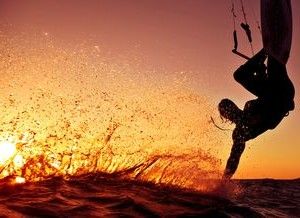 Height of storm waves in the ocean
Surfers
head out at dawn to ride smooth, windless waters – this is the perfect condition.
Height of storm waves in the ocean
Surfers
head out at dawn to ride smooth, windless waters – this is the perfect condition.
Wave quality depends on the coastal wind. Some of the best waves can be found here → .
- Onshore – wind that blows from the ocean toward the shore.
This type of wind “blows down” the wave crests, chopping the waves and making them bumpy and uneven; it prevents the waves from “standing up.”
Onshore wind causes waves to close out prematurely. It is the worst wind for surfing, as it can ruin the entire ride.
It’s especially dangerous when the wind direction aligns with the swell direction.
- Offshore – wind that blows from the shore toward the ocean.
If it isn’t gusty, offshore wind gives waves a clean and proper shape, “lifting” them and delaying the breaking point.
This wind is ideal for surfing.
- Crossshore – wind that blows parallel to the coastline.
It doesn’t enhance the wave front but can sometimes significantly degrade it.
Types of Waves
 Ocean waves
Closeout – a wave that breaks all at once along its entire length, making it unsuitable for surfing.
Ocean waves
Closeout – a wave that breaks all at once along its entire length, making it unsuitable for surfing.
Gentle waves lack speed and steepness. With a low seabed incline, they break slowly, without forming a high wall or tube, so they are recommended for beginners.
Plunging waves – powerful, fast, high waves that form near areas with a sharp depth change. They create opportunities for tricks and often form tubes that allow surfers to ride through them.
Preferred by professionals, they are dangerous for beginners as they’re harder to ride and more likely to cause falls.
Types of Surf Spots
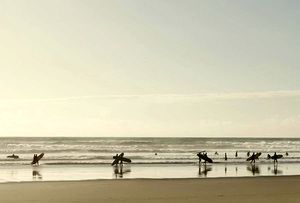 Surf spots
The place where a wave breaks is called a surf spot. The nature of the wave is determined by the characteristics of the seabed.
Surf spots
The place where a wave breaks is called a surf spot. The nature of the wave is determined by the characteristics of the seabed.
- Beach-break – a spot where waves crash over a sandy bottom. In areas with varying depths, the wave bends and breaks toward the shallow area. This offers surfers the chance to slide along the water wall.
Beach breaks, such as those in the French town of Hossegor, are ideal for beginners since the sandy bottom is safer in case of falls.
A unique aspect of these spots: shifting sandbanks can change a wave’s characteristics. Peaks – the point where waves break – “move around” as a result.
This shifting nature is typical for Australian beach breaks, but in Bali, the sands are relatively stable.
For experienced surfers, riding constantly closing beach waves holds less appeal. They seek spots with uneven seabeds, which provide variations in wave height.
- Reef-break – a spot with a reef or rock formation on the seabed. Sharp depth changes produce high waves with barrels, where the breaking occurs later.
The main advantage of these waves is their consistency and predictability. Reefs are often sheltered by sandy barriers, making it easier for surfers to paddle out to the lineup. Reef breaks are preferred by skilled surfers, but due to the sharp edges of reefs and rocks, they can be dangerous during falls.
Examples: Pipeline in Hawaii, most surf spots in Bali. These are the classic waves captured in the best surfing videos.
- Point-break – the longest waves, formed when a swell collides with an obstacle protruding from the water: a cape like in Ireland , a peninsula such as Cornwall , a rock formation, or a cliff.
After rounding the obstacle, a series of perfectly shaped waves are created, which break gradually over hundreds of meters. These are ideal for long rides.
Examples: Medewi in Bali, Bells Beach in Australia.
Left, right, and peak waves
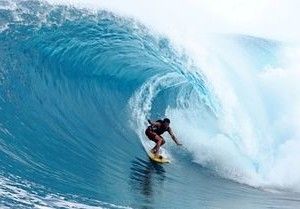 Different types of surfing waves
The direction of a wave is measured from the ocean’s perspective, with the surfer moving toward the shore in mind.
Different types of surfing waves
The direction of a wave is measured from the ocean’s perspective, with the surfer moving toward the shore in mind.
Left-handed waves break from right to left.
The surfer will glide along the wall of the wave to the left to avoid being overtaken by the crest.
From the shore, this movement will look like it’s going to the right.
Right-handed waves – the opposite of left-handed ones.
Peak waves break in both directions at the same time, allowing two surfers to ride them in opposite directions.
The effect of tides
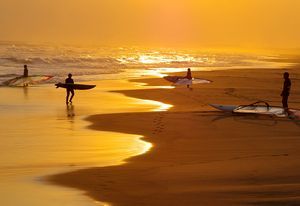 The effect of tides in surfing
The formation of waves is also influenced by the water level in the ocean, which rises twice a day during high tide.
The effect of tides in surfing
The formation of waves is also influenced by the water level in the ocean, which rises twice a day during high tide.
There’s a common misconception that surfing is only ideal during high tide. This is incorrect: each surf spot has its own conditions for ideal waves.
During low tide, beginners are more likely to encounter rocks on the seabed.
At peak high tide, large coastal waves make it harder to enter the ocean.
Before heading into the water, it’s wise to research the surf spot’s features and the tide schedule.
Waves are a mysterious and mesmerizing natural phenomenon. The perfect wave is different for every surfer. Beginners dream of riding long without falling; others aim to carve turns along a smooth wave wall, glide from a towering crest, or navigate through the inside of a fast barrel.
But everyone dreams of feeling like a powerful tamer of the raging ocean, conquering their fear while overcoming inexperience and weakness!
Video
Watch a video of a surfer conquering a giant wave:
